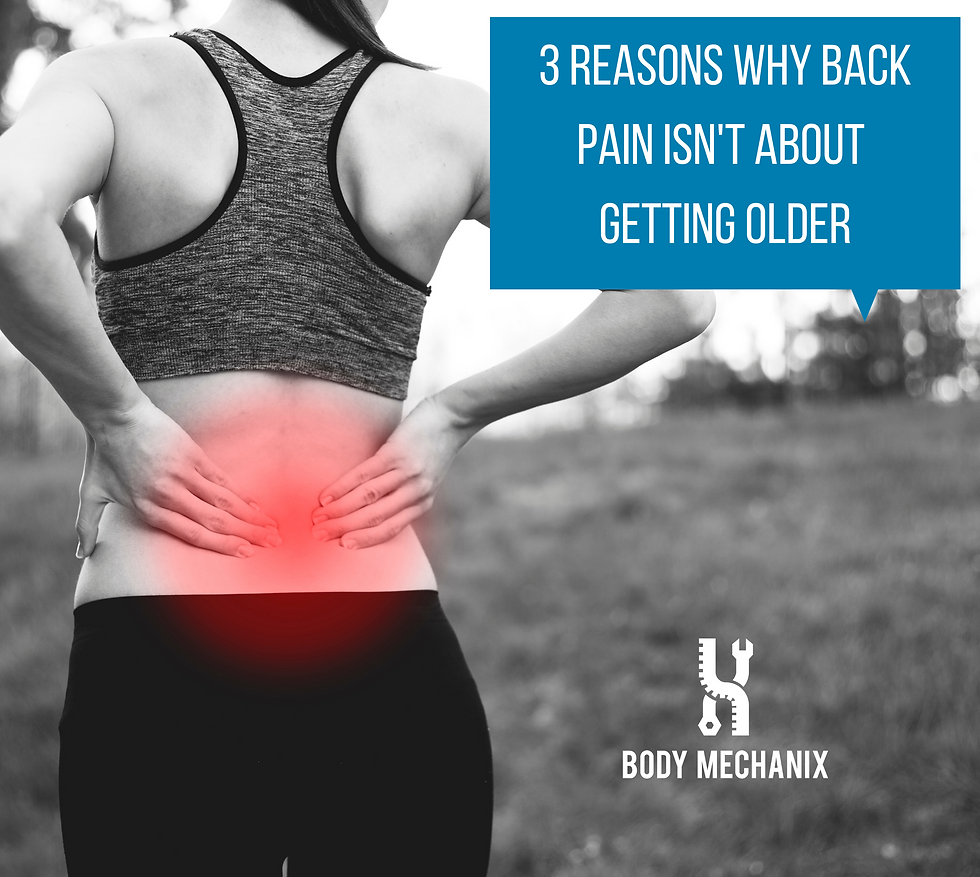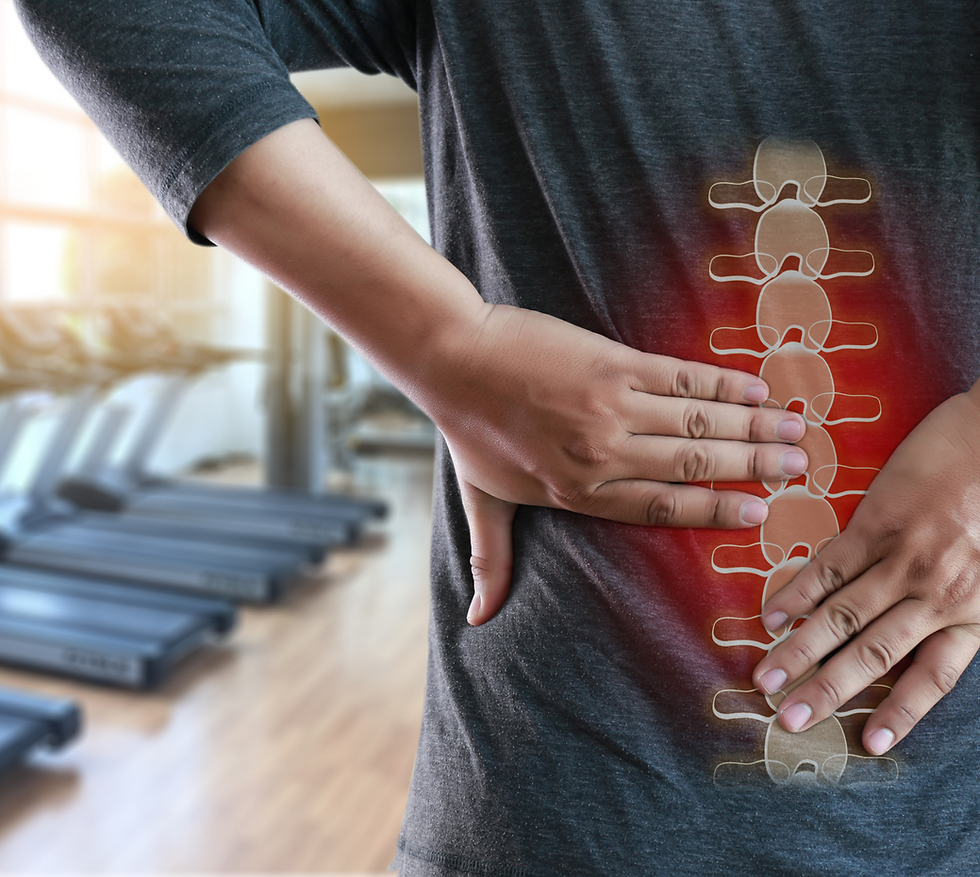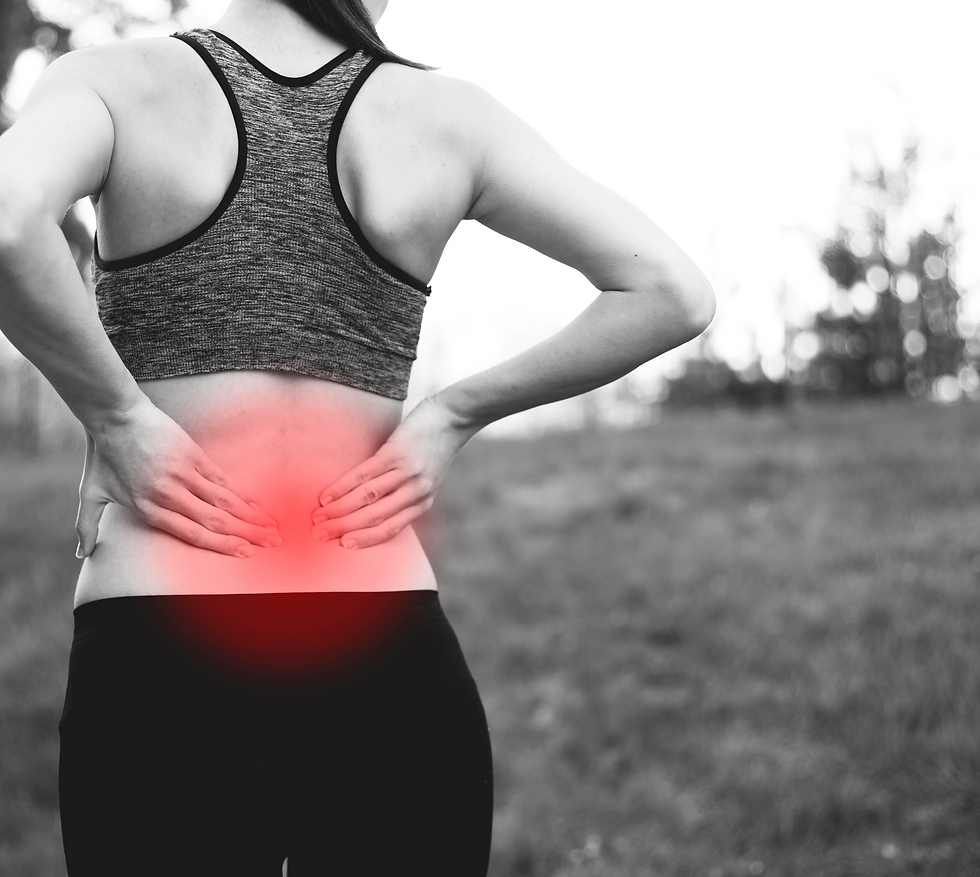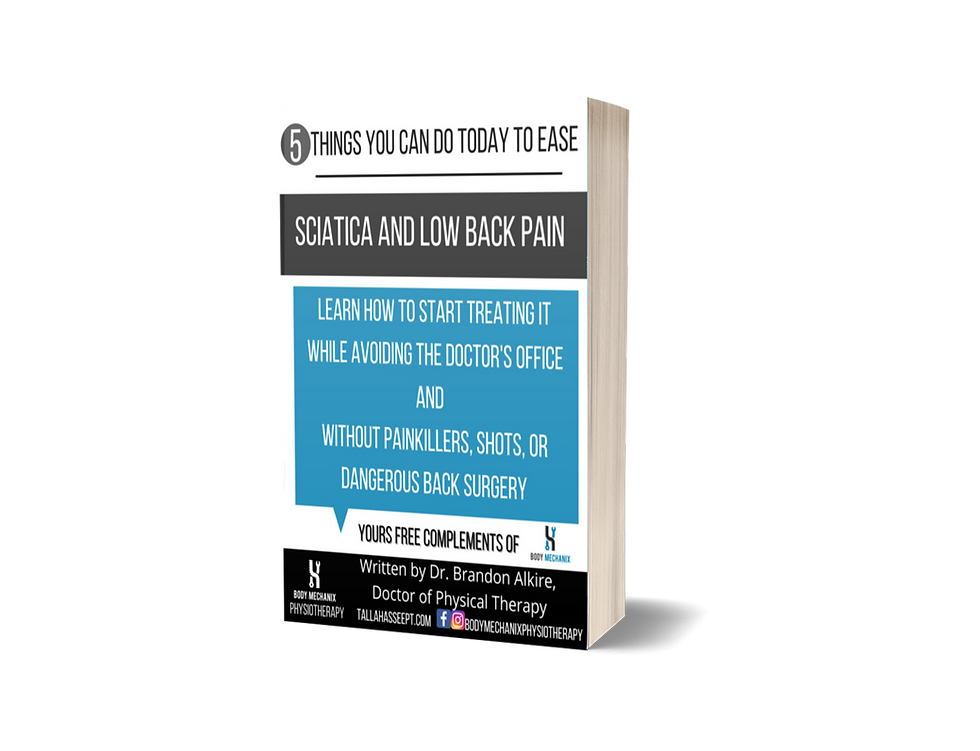Three reasons why back pain isn't about getting older
- Dr. Brandon
- Apr 12, 2021
- 5 min read
Updated: Apr 13, 2021

Does this story sound familiar? I just recently was working with a 31 year old who had low back pain and was told by their doctor “You know, you’re getting older and back pain is part of that”? The doctor didn’t stop there. This person is a runner and a mom who wanted to be active and be able to play with her kids and also get the stress relief that she got from running. But her back pain made it that she was not even able to bend over and lace up her shoes let alone make it out the door. But her doctor told her to “rest 6 weeks, take some anti-inflammatories, and maybe think about giving up running”. And this person wasn’t alone. I’ve heard this way too many times from 20 and 30 year olds(and don’t get me started on what doctors tell people in their 40s and 50s). So I wanted to set the record straight on what’s really going on and talk about 3 reasons why back pain isn’t about getting older(no matter your age).
Reason #1
Have you been told that you have changes on your x-ray or MRI? These usually go by the names of Degenerative Disc Disease, Lumbar Stenosis, bulging discs, herniat

discs, loss of lordosis, or too much of a curve in your spine. Often these words are tossed around pretty casually and usually not explained in any great detail...which then leads people to ask Professor Google what those words mean and guess what is top of the search rankings? A picture that looks like this. So, let’s break down some of the real meanings of these terms and what they tell us about our backs.
Degenerative Disc Disease...sounds bad, right? Makes you think that it is only going to get worse and that if it is a disease and it is in my back...maybe it is the cause of the back pain? What if I told you that it is neither degenerative or a disease? When we first started using MRIs, doctors coined this phrase talk about changes that they saw in the spine, especially as somebody got older. What they didn’t know at the time was that those changes were also in people without any back pain at all. In fact, some of those changes, in people who are pain free, can be found in people in their 20s. What’s more, when we target these discs with medical treatments, they often have no effect. I’ve even heard of doctors telling their patients that, because of what they saw on an MRI, that they have the spine of an 80 year old and that often stops their patient in their tracks because...if it is degenerative...and their spine is already that of an 80 year old...they better play it safe and make sure they rest as much as possible and do only “safe” things because when they wanted to lift or run, their back would hurt. When they did this, they created a self-fulfilling prophecy because now their support system for their spine got weaker and weaker until doing basic things would set off their back pain. Unfortunately, this group is often shunted off to “pain management” and a lifetime of shots, dependency on medications, and ultimately surgeries...some of which the surgeons wouldn’t even have on themselves.
What about stenosis? This one often comes along with Degenerative Disc Disease. Did you know that the spine has a lot of space? And if the doctor sees some narrowing, more often than not, you still have enough free space in your spine to do just about anything(even if you may feel a bit stiffer when you start moving). In fact, for your nerves to move freely, you only need about ⅓ of the space available. What’s more, is that the older you are, the more likely you are to have this happening and not know it(because you didn’t have pain).
How about bulging discs? Did you know that they heal? Think of a bulging disc as the spine’s version of a rolled ankle. When you first roll it, it is red, swollen, and it hurts to move. But it heals, right? The spine is the same way. In fact, after about 3 months, the disc bulge is about 50% smaller than it was, at 6 months about 75% and finally at a year, it is fully reabsorbed as the body gets rid of the excess fluid. Some feel better long before full healing and many have chronic pain long after the spine has healed. What’s more, due to the way your back is wired(nerves), your pain may actually be coming from a level above or below where you have your disc bulge.
The key takeaway with imaging findings is that the same changes that are found on somebody that has pain are found on many people that have no pain at all in their low back, no matter their age.

Reason #2
Now, ask yourself how your back pain is behaving(other than badly). If your back pain has any variability(even from bad to worse) or can be made worse by sitting, bending, or carrying things, it is usually not about getting older but rather it is a type of pain called mechanical pain. Why? Is your back younger when you feel better but then you bend forward and it ages? None of us think like that when we don’t have pain but when we’ve been told it is from “wear and tear” or “degeneration” we usually take it to mean “old” and that our pain is now about being old rather than about the things that make it better(or worse).
The best news about if you have any variability in your back pain(even from bad to worse) is that there are many things that you can do to help treat it that can help you get back to the active lifestyle you deserve.
Key Takeaway: If your back pain has any changes(even from bad to worse), there are many things you can do to help treat it
Reason #3
With all we’ve been told about back pain, you’d think that teens and twenty somethings would be pain free while our parents and grandparents would be the ones who dealt with the most back pain. In fact, back pain occurrence(the number of people who report back pain at any given time) is at age 40. In fact, this is often as a result of people slowing down in their 30s as they have an office job and have 15 years under their belt of sitting behind a desk. After 40, the occurrence of back pain actually starts to go down(all the while age related changes to the spine, arthritis or Degenerative disc disease continues to climb).
Looking for more advice on how to start treating low back pain or sciatica? Get your free copy of my e-book “5 things you can do today








Comments